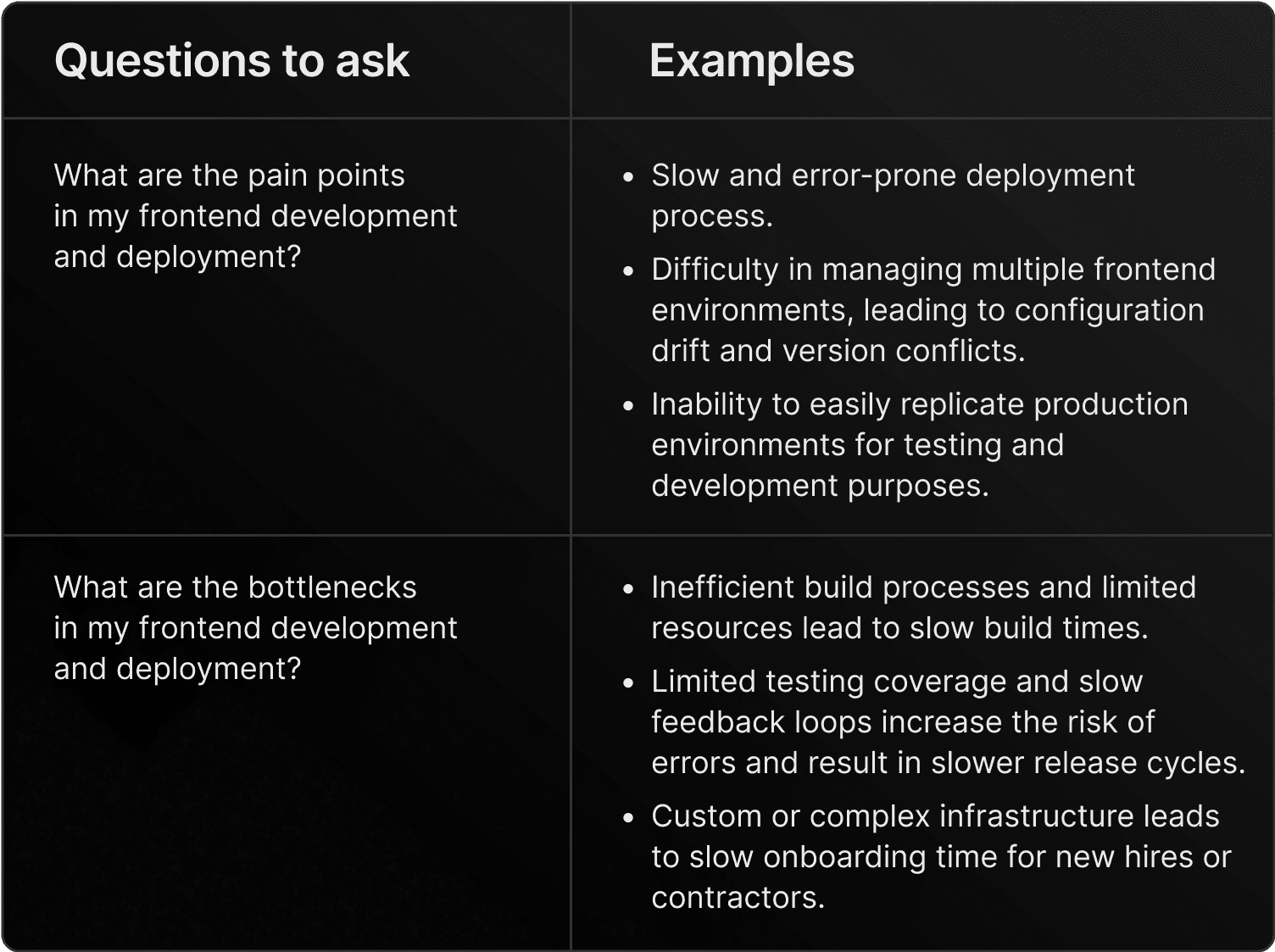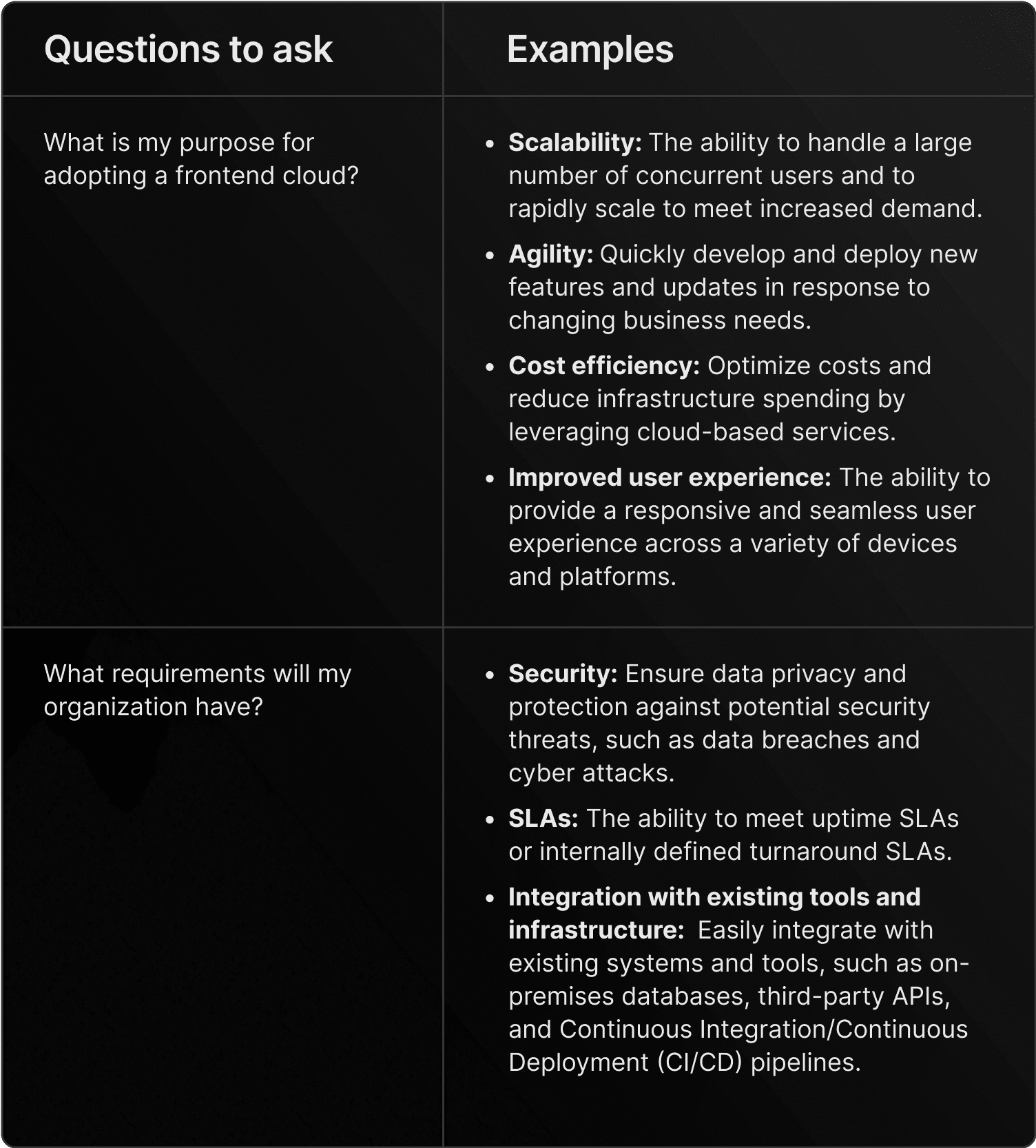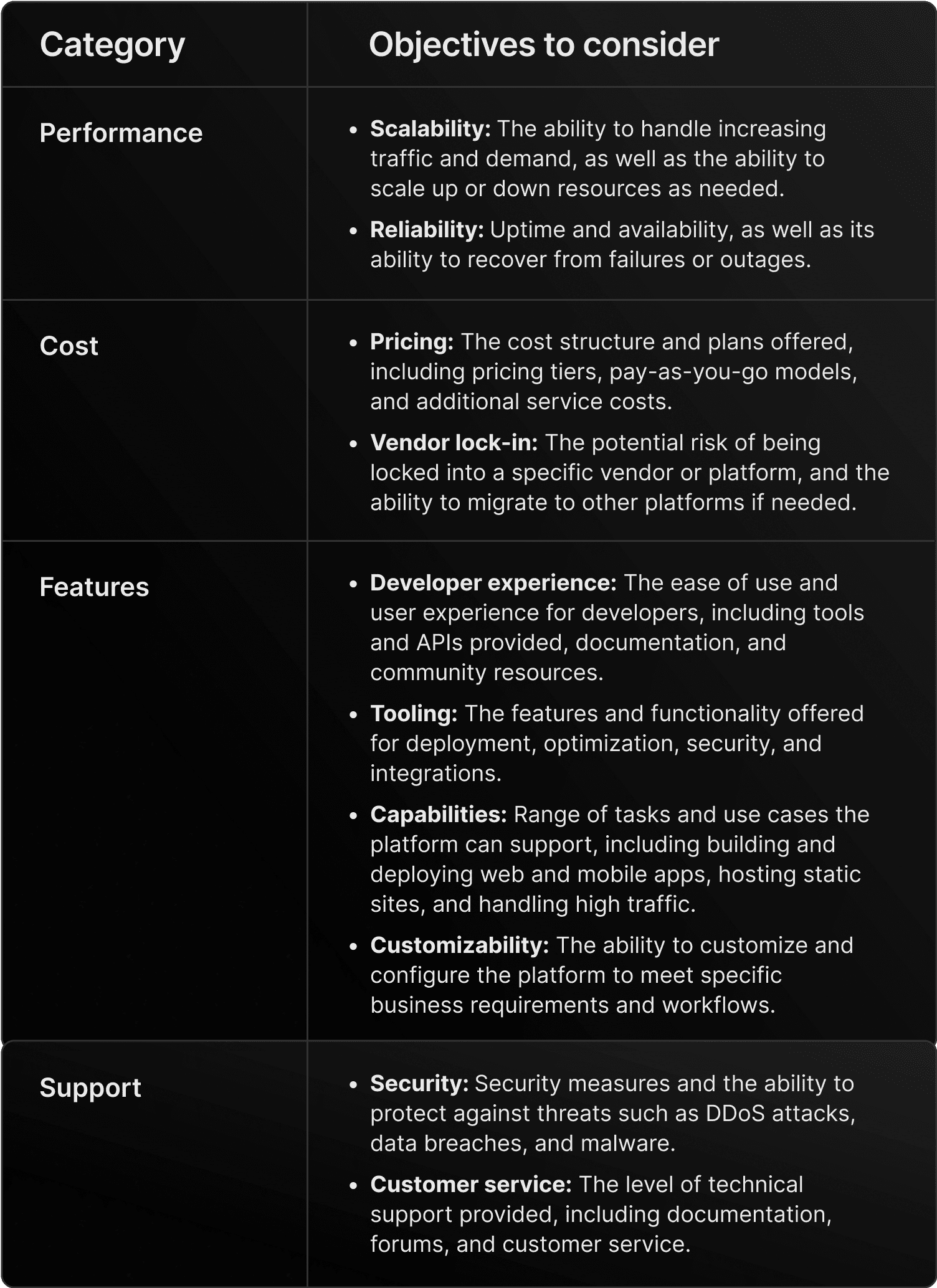May. 25th, 2023
Steps for successful frontend cloud adoption
A practical guide to implementation tactics, potential roadblocks, and ROI measurements
Introduction
A frontend cloud is a suite of cloud-native tools—like global infrastructure and caching, observability, and workflow tooling—designed to help companies and developers deliver the best web experience for their users.
This toolkit addresses the unique requirements of frontend developers, providing a comprehensive suite of tools and services designed to facilitate the development, testing, and deployment of high-quality web applications. It offers a wide range of benefits for organizations seeking to optimize their web development processes, improve time to market, and deliver engaging user experiences.
From Netflix to Traeger Grills, these unique advantages are spurring high-performing enterprise engineering teams to adopt a frontend cloud.
This whitepaper will outline the process an organization may follow for frontend cloud adoption, followed by potential roadblocks and suggested ROI measurements.
6 steps for frontend cloud adoption
Implementing a frontend cloud requires careful planning, evaluation, and collaboration across the organization. Here are six practical steps your business can take for better developer and user experience via your frontend cloud:
1. Assess your current frontend infrastructure and workflows
Identify areas for improvement in your existing frontend development and deployment processes.

2. Define your goals and requirements
Establish clear objectives for adopting a frontend cloud.

3. Evaluate frontend cloud providers
Find the one that best aligns with your organization's goals and requirements.

4. Develop a migration plan
Outline the necessary steps for migrating your existing frontend assets and infrastructure to the chosen frontend cloud platform.
5. Train your team
Ensure that developers and other stakeholders are well-versed in the new tools, technologies, and workflows associated with the frontend cloud.
Choose a frontend cloud solution that has a robust offering of:
- Documentation: Comprehensive documentation and tutorials to help developers get started with the platform, covering topics such as deployment, performance optimization, and security.
- Training and support: Online training and support resources, including forums, Slack communities, and customer support, to help developers and stakeholders learn and troubleshoot any issues they encounter.
- Integrations: Integrates with other developer tools and services, such as CMS or commerce tool of choice, your Git provider of choice, and any observability or monitoring tools to streamline workflows and reduce the learning curve associated with adopting a new platform.
- Community resources: A strong and active community of developers who contribute to open-source projects, share best practices, and provide peer support through online forums and social media.
- Enterprise support: For enterprise customers, additional services such as dedicated support, training, and customized onboarding to ensure a smooth transition to the new tools and workflows.
6. Monitor progress and iterate
Continuously assess the effectiveness of your frontend cloud adoption, making adjustments as needed to optimize outcomes and achieve your desired goals.
Overcoming challenges and potential roadblocks
For a smooth tech stack transition, it’s important to address potential challenges proactively. Here are some anticipated roadblocks that your team may address in advance of your frontend cloud journey:
Addressing concerns about vendor lock-in
Choose a frontend cloud provider with a strong commitment to open standards and interoperability, minimizing the risk of being locked into a single platform.
Managing change resistance
Communicate the benefits of adopting a frontend cloud to your team and involve them in the decision-making process to foster buy-in and minimize resistance to change. Gather stakeholders early, and start with an incremental migration (a subset of pages, or a single team) to prove out your solution.
Ensuring security and compliance
Leverage the built-in security features of your frontend cloud provider and stay up-to-date on industry best practices to maintain a secure and compliant frontend environment.
Scaling your frontend cloud adoption
Plan for growth by selecting a provider that offers flexible, scalable solutions that can adapt to your organization's evolving needs.
Measuring the impact and ROI of a frontend cloud implementation
High-performing enterprise teams are reaping the benefits of their frontend clouds. What kind of return on investment will your team see? Get your dashboards ready—here are some categories you can measure upon implementation:
Deployment frequency
The number of deployments to the frontend cloud platform over a given period of time, indicating the agility and speed of the development process.
Time to market
The time it takes to develop and release new features or updates to the frontend, indicating the speed and efficiency of the development process.
Availability
The percentage of time that the frontend cloud platform is available and responsive to users, indicating the reliability and uptime of the platform.
Page load time
The time it takes for a page to load on the frontend, indicating the performance and user experience of the platform.
User engagement
Metrics such as click-through rates, bounce rates, and user retention can provide insight into how users are engaging with the frontend and whether it is meeting their needs.
Cost savings
The reduction in infrastructure and maintenance costs compared to on-premise hosting or other hosting options, indicating the ROI of adopting a frontend cloud platform.
Developer productivity and onboarding
Metrics such as code quality and developer satisfaction can provide insight into the efficiency and effectiveness of the development process. Additionally, you can track the length of time for contractor and new hire onboarding.
Conclusion
Implementing a frontend cloud requires careful planning, evaluation, and collaboration across the organization, but the long-term benefits in terms of efficiency, scalability, and adaptability are well worth the effort. By following the strategies outlined in this whitepaper, organizations can successfully navigate the adoption process and fully harness the power of the frontend cloud to propel their digital transformation journey.

